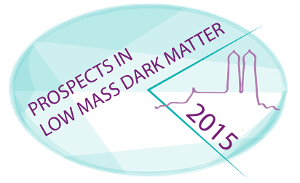Speaker
Dr
Bela Majorovits
(MPI Physik)
Description
Axions are hypothetical low-mass bosons which are predicted to exist by the Peccei-Quinn mechanism that can explain the absence of CP-violating effects in quantum chromodynamics (QCD). Axions could also provide the cold dark matter of the universe and as such are among the few particle candidates that solve simultaneously two major problems of nature. All existing experimental efforts focus on a range of axion masses below 20 ?eV which is motivated by the traditional re-alignment mechanism of the axion field. If the Peccei-Quinn symmetry was restored after inflation, decaying topological defects could lead to an axion population providing all of the cold dark matter with an axion mass in the range of 100–300 ?eV.
We present a new project based on the idea of axion photon conversion at the transition between two media with different dielectric constants. With a homogeneous magnetic field at such a transition layer, coherent photon production in the microwave regime could be generated by the hypothetical dark matter axion field. A significant boost in photon conversion can be achieved when using several layers with alternating dielectric constants. The additional surfaces are forming coupled resonant cavities and could enhance the axion-photon conversion rate significantly. A resonator with a boost factor of ~10^4 within a magnetic field of order 10T could be enough to achieve an axion-photon conversion rate within a reasonable volume to be unambiguously detected with state of the art radiometer technology within a reasonable time per frequency band.
The experimental idea and the proposed design for an experiment will be discussed in some detail. First results from measurements of the expected preamplifier noise and the microwave radiation transmission behavior of a prototype resonant dielectric cavity will be discussed. The prospects for reaching a sensitivity enough to cover the parameter space predicted for QCD dark matter axions with mass in the range 100-300 ueV will be presented.
Primary author
Dr
Bela Majorovits
(MPI Physik)

